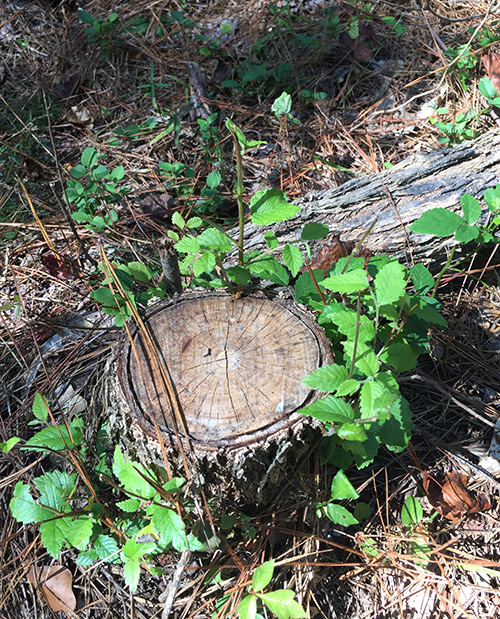No longer stumped: mineral stumps provide white-tailed deer nutrition
Contact: Sarah Buckleitner

STARKVILLE, Mississippi—It has long been a mystery why white-tailed deer devour the sprouts from recently cut tree stumps. A Mississippi State assistant professor in the Department of Wildlife, Fisheries and Aquaculture has figured out why—and developed a simple, cost-effective management technique to help support white-tailed deer during seasons of poor forage.
Marcus Lashley said the tree species that populate southeastern forests are notoriously nutrient-poor and deer tend to prefer nutrient-rich forbs—an herbaceous, flowering plant other than a grass. Lashley said he had noticed that even when forbs were in abundance, deer still preferred to browse the sprouts from cut hardwoods when available.
“As a kid sitting on a tree stand, I noticed that deer were eating from the stump of a hardwood I’d cut down. I was curious about why, because hardwood trees are nutritionally poor for deer,” Lashley said.
With research funding through MSU’s Forest and Wildlife Research Center, Lashley worked with graduate student Don Chance to answer this question. They cut a range of red maples (a tree species known for being nutritionally poor), and measured the nutrient quality of the leaves. They also monitored the stumps’ attractiveness to deer with strategically placed game cameras.
The growth from cut stumps had much higher nutrient levels and was highly attractive to deer. Lashley and Chance attribute this to a process called up-regulation.
“Trees maintain an even distribution of nutrients throughout the roots and above ground foliage. When the tree gets cut, the nutrients get redistributed, and the tree up-regulates the nutrients in its roots into the sprouts on the stump, which leads to nutritious forage for wildlife species,” Chance explained.
This process is similar to the natural cycle often caused by seasonal wildfires.
“As the summer dries out and plants begin to lose their nutrients, lightning strikes cause wildfires, which kill off the above-ground foliage and stimulate new growth. Like with the cut stumps, this new growth is highly nutritious,” Chance said.
The researchers believe this process may explain why the peak lactation of deer occurs later in the summer. Since this is when deer are able to get needed nutrition for milk production, the scientists think the wildfire-regrowth cycle may impact the timing of when deer breed and give birth.
They plan to expand this research by examining the nutrient loads of other tree species after they have been cut.
Lashley said this new understanding of mineral stumps will enable hunters and other forest managers to assist deer herds and other herbivores during lean times.
“All it takes is a chainsaw,” Lashley said.
For more on MSU’s Department of Wildlife, Fisheries and Aquaculture in the College of Forest Resources, visit http://www.cfr.msstate.edu/wildlife/.
MSU is Mississippi’s leading university, available online at www.msstate.edu.